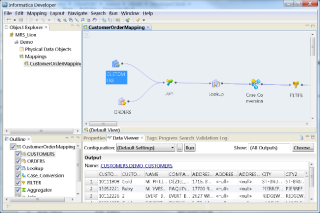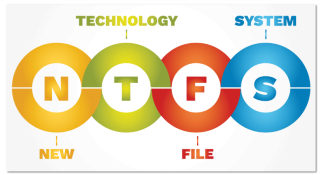How to Install Alfresco Community Edition on Ubuntu 16.04
Using a Different System? Alfresco Community Edition is an open source version of the Alfresco Content Services. It is written in Java and uses PostgreSQL t
InvoicePlane is a free and open source invoicing application. Its source code can be found on this Github repository. This guide will show you how to install InvoicePlane on a fresh Debian 9 Vultr instance.
php-gdphp-hashphp-jsonphp-mbstringphp-mcryptphp-mysqliphp-opensslphp-recodephp-xmlrpcphp-zlibCheck the Debian version.
lsb_release -ds
# Debian GNU/Linux 9.4 (stretch)
Ensure that your system is up to date.
apt update && apt upgrade -y
Install sudo, build-essential and unzip packages.
apt install -y sudo build-essential unzip
Create a new non-root user account with sudo access and switch to it.
adduser johndoe --gecos "John Doe"
usermod -aG sudo johndoe
su - johndoe
NOTE: Replace johndoe with your username.
Set up the timezone.
sudo dpkg-reconfigure tzdata
Install PHP and necessary PHP extensions.
sudo apt install -y php7.0 php7.0-cli php7.0-fpm php7.0-gd php7.0-json php7.0-mbstring php7.0-mcrypt php7.0-mysql php7.0-xmlrpc php7.0-common php7.0-recode
Check the version.
php -v
Install MariaDB.
sudo apt install -y mariadb-server
Check the version.
mysql --version
Run the mysql_secure installation script to improve MariaDB security.
sudo mysql_secure_installation
Connect to the MariaDB shell as the root user.
sudo mysql -u root -p
# Enter password:
Create an empty MariaDB database and user for InvoicePlane, and remember the credentials.
CREATE DATABASE dbname;
GRANT ALL ON dbname.* TO 'username' IDENTIFIED BY 'password';
FLUSH PRIVILEGES;
Exit MariaDB.
exit
Install Nginx.
sudo apt install -y nginx
Check the version.
sudo nginx -v
Configure Nginx for InvoicePlane. Run sudo vim /etc/nginx/sites-available/invoiceplane.conf and populate the file with the following configuration.
server {
listen 80;
listen [::]:80;
server_name example.com;
root /var/www/invoiceplane;
index index.php index.html;
location / {
try_files $uri $uri/ /index.php?$query_string;
}
location ~ \.php$ {
fastcgi_index index.php;
try_files $uri =404;
include fastcgi_params;
fastcgi_param SCRIPT_FILENAME $document_root$fastcgi_script_name;
fastcgi_pass unix:/run/php/php7.0-fpm.sock;
}
}
Activate the new invoiceplane.conf configuration by linking the file to the sites-enabled directory.
sudo ln -s /etc/nginx/sites-available/invoiceplane.conf /etc/nginx/sites-enabled/
Test the configuration.
sudo nginx -t
Reload Nginx.
sudo systemctl reload nginx.service
Download the latest stable version of InvoicePlane and extract the archive.
cd /var/www/
sudo curl -O -J -L https://invoiceplane.com/download/v1.5.9
sudo unzip v1.5.9.zip
sudo rm v1.5.9.zip
sudo mv ip invoiceplane
Navigate to the /var/www/invoiceplane folder.
cd /var/www/invoiceplane
Make a copy of the ipconfig.php.example file and rename the copy ipconfig.php.
sudo cp ipconfig.php.example ipconfig.php
Open the ipconfig.php file and add your URL to it.
sudo vim ipconfig.php
# Something like this
IP_URL=http://example.com
NOTE: Don't forget to replace the http://example.com URL with your own URL.
Change ownership of the /var/www/invoiceplane directory to www-data.
sudo chown -R www-data:www-data /var/www/invoiceplane
Run the InvoicePlane installer from your web browser and follow the instructions.
http://your-domain.com/index.php/setup
Once the installation has finished, you may log into InvoicePlane using the email address and password you have chosen during the installation.
If you want to secure your installation, you may disable the setup. To do so, replace the line DISABLE_SETUP=false with DISABLE_SETUP=true in your ipconfig.php file.
Using a Different System? Alfresco Community Edition is an open source version of the Alfresco Content Services. It is written in Java and uses PostgreSQL t
¿Usando un sistema diferente? osTicket es un sistema de tickets de soporte al cliente de código abierto. El código fuente de osTicket está alojado públicamente en Github. En este tutorial
¿Usando un sistema diferente? osTicket es un sistema de tickets de soporte al cliente de código abierto. El código fuente de osTicket está alojado públicamente en Github. En este tutorial
Using a Different System? Matomo (formerly Piwik) is an open source analytics platform, an open alternative to Google Analytics. Matomo source is hosted o
Using a Different System? Osclass is an open source project that allows you to easily create a classified site without any technical knowledge. Its sourc
Using a Different System? Matomo (formerly Piwik) is an open source analytics platform, an open alternative to Google Analytics. Matomo source is hosted o
¿Usando un sistema diferente? X-Cart es una plataforma de comercio electrónico de código abierto extremadamente flexible con toneladas de características e integraciones. El código fuente de X-Cart es hoste
Using a Different System? Microweber is an open source drag and drop CMS and online shop. Microweber source code is hosted on GitHub. This guide will show yo
Using a Different System? Mailtrain is an open-source self hosted newsletter app built on Node.js and MySQL/MariaDB. Mailtrains source is on GitHub. Thi
Using a Different System? Matomo (formerly Piwik) is an open source analytics platform, an open alternative to Google Analytics. Matomo source is hosted o
Using a Different System? Mailtrain is an open-source self hosted newsletter app built on Node.js and MySQL/MariaDB. Mailtrains source is on GitHub. Thi
Using a Different System? Mailtrain is an open-source self hosted newsletter app built on Node.js and MySQL/MariaDB. Mailtrains source is on GitHub. Thi
¿Usando un sistema diferente? Taiga es una aplicación gratuita y de código abierto para la gestión de proyectos. A diferencia de otras herramientas de gestión de proyectos, Taiga utiliza un incre
Using a Different System? osTicket is an open-source customer support ticketing system. osTicket source code is publicly hosted on Github. In this tutorial
¿Usando un sistema diferente? Alfresco Community Edition es una versión de código abierto de Alfresco Content Services. Está escrito en Java y usa PostgreSQL t
Using a Different System? Introduction Akaunting is a free, open source and online accounting software designed for small businesses and freelancers. It i
¿Usando un sistema diferente? Zammad es un sistema de asistencia / tickets de código abierto diseñado para equipos de atención al cliente. Con Zammad, servicio al cliente
Using a Different System? Akaunting is a free, open source and online accounting software designed for small businesses and freelancers. It is built wit
Using a Different System? InvoicePlane is a free and open source invoicing application. Its source code can be found on this Github repository. This guid
Using a Different System? Matomo (formerly Piwik) is an open source analytics platform, an open alternative to Google Analytics. Matomo source is hosted o
ZPanel, un panel de control de alojamiento web popular, se bifurcó en 2014 a un nuevo proyecto llamado Sentora. Aprende a instalar Sentora en tu servidor con este tutorial.
Aprende cómo instalar Vtiger CRM, una aplicación de gestión de relaciones con el cliente, en CentOS 7 para aumentar tus ventas y mejorar el servicio al cliente.
Esta guía completa le mostrará cómo configurar un servidor Counter-Strike 1.6 en Linux, optimizando el rendimiento y la seguridad para el mejor juego. Aprende los pasos más recientes aquí.
Los ataques de ransomware van en aumento, pero ¿puede la IA ayudar a lidiar con el último virus informático? ¿Es la IA la respuesta? Lea aquí, sepa que la IA es una bendición o una perdición
ReactOS, un sistema operativo de código abierto y gratuito, está aquí con la última versión. ¿Puede satisfacer las necesidades de los usuarios de Windows de hoy en día y acabar con Microsoft? Averigüemos más sobre este estilo antiguo, pero una experiencia de sistema operativo más nueva.
Whatsapp finalmente lanzó la aplicación de escritorio para usuarios de Mac y Windows. Ahora puede acceder a Whatsapp desde Windows o Mac fácilmente. Disponible para Windows 8+ y Mac OS 10.9+
Lea esto para saber cómo la Inteligencia Artificial se está volviendo popular entre las empresas de pequeña escala y cómo está aumentando las probabilidades de hacerlas crecer y dar ventaja a sus competidores.
Recientemente, Apple lanzó macOS Catalina 10.15.4, una actualización complementaria para solucionar problemas, pero parece que la actualización está causando más problemas que conducen al bloqueo de las máquinas Mac. Lee este artículo para obtener más información
13 Herramientas comerciales de extracción de datos de Big Data
Nuestra computadora almacena todos los datos de una manera organizada conocida como sistema de archivos de diario. Es un método eficiente que permite a la computadora buscar y mostrar archivos tan pronto como presiona buscar.




